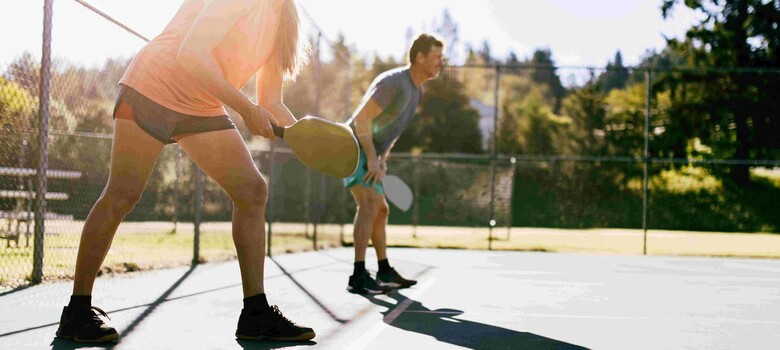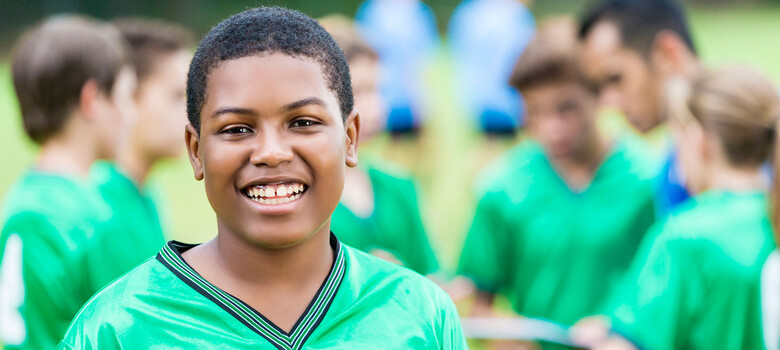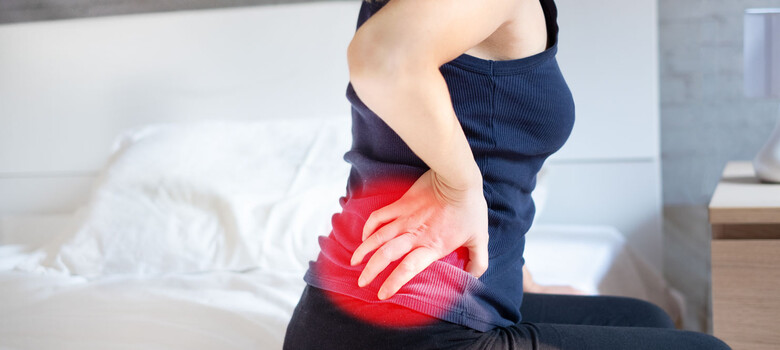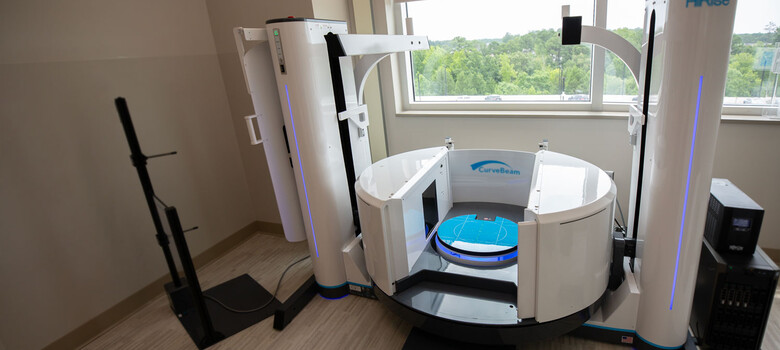 From the DukeHealth.org archives. Content may be out of date.
From the DukeHealth.org archives. Content may be out of date.
'No Pain, No Gain' Not the Best Medicine
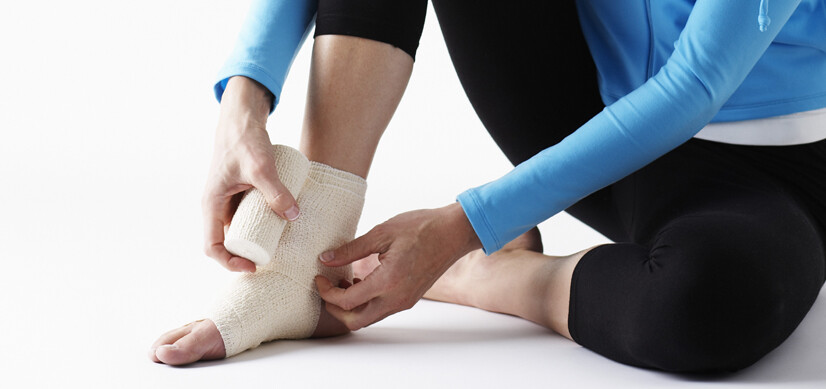
Young athletes who take a “no pain, no gain” approach to sports may not realize how harmful that mantra can be to their growing bodies.
“It’s all about how you define pain,” says Tracy Ray, MD, a primary care physician specializing in sports medicine with Duke Orthopaedics. “If you’re sore, and you’re tired, you need to push yourself through those uncomfortable feelings in order to condition your body and develop speed, strength and endurance.”
However, an athlete who experiences pain in a specific joint or body part repeatedly during an activity needs to know when to stop and rest. Parents need to understand that too, Dr. Ray stresses. “When parents push their children to play sports despite complaints, they are doing a lot more harm than good.”
Playing through pain may put an athlete on the bench with a serious injury that takes longer to heal. It could also set them up for problems throughout their playing career and into adulthood.
“Untreated repetitive injuries can cause stress fractures or chronic tendon problems in young bodies, and it can increase the chances surgery will be needed to repair the injury. When some cartilage injuries are ignored, it’s entirely likely that arthritis will set in when they become adults,” says Dr. Ray.
Overuse injuries typically result from doing too much of one activity, or doing too much, too quickly. Improper technique can also be to blame.
Whether it’s dance or cheerleading, soccer or baseball, kids who play the same sport year round are at the highest risk for overuse injuries, says Dr. Ray. “Parents often think they are doing the right thing for their kids by encouraging them to pursue their passions. They may even dream of a college scholarship,” he says.
Kids and their parents are often reluctant to seek medical care because they think the practitioner will tell them to rest. Dr. Ray says that’s not the doctor talking; it’s the athlete’s body. “If your body hasn’t had enough recovery time, it’s going to tell you. The question is: are you going to listen.”
Parents can help their young athletes avoid repetitive use injuries with these helpful tips:
- Encourage more than one sport. That’s a great way to improve overall speed, strength and endurance, build up the entire body and discourage overuse of one particular area.
- Push for proper technique. Playing an organized sport doesn’t mean your child is learning to do the sport the right way. An athletic trainer or good coach may be able to spot and correct problems with form or mechanics that may lead to injury.
- Become familiar with symptoms of overuse injuries. They include: pain with exercise or activity; muscle aches and soreness; swelling; and decreased strength or speed.
- Ask the right questions. Does your child feel fatigue or muscle soreness? That may not a bad sign. Does it hurt every time they throw a ball or do a stunt? If the answer is yes, an evaluation is a good next step.
- Get injuries evaluated. Don’t hesitate to seek medical care because you think the doctor will take them out of the game. “Rest may be all that’s needed for healing to take place,” says Dr. Ray.
- Know when to rest. It can go a long way toward ensuring a minor injury doesn’t become a major one.
How to Avoid Injury
Parents can help their young athletes avoid repetitive use injuries with these helpful tips:
- Encourage more than one sport. That’s a great way to improve overall speed, strength and endurance, build up the entire body and discourage overuse of one particular area.
- Push for proper technique. Playing an organized sport doesn’t mean your child is learning to do the sport the right way. An athletic trainer or good coach may be able to spot and correct problems with form or mechanics that may lead to injury.
- Become familiar with symptoms of overuse injuries. They include: pain with exercise or activity; muscle aches and soreness; swelling; and decreased strength or speed.
- Ask the right questions. Does your child feel fatigue or muscle soreness? That may not a bad sign. Does it hurt every time they throw a ball or do a stunt? If the answer is yes, an evaluation is a good next step.
- Get injuries evaluated. Don’t hesitate to seek medical care because you think the doctor will take them out of the game. “Rest may be all that’s needed for healing to take place,” says Dr. Ray.
- Know when to rest. It can go a long way toward ensuring a minor injury doesn’t become a major one.
